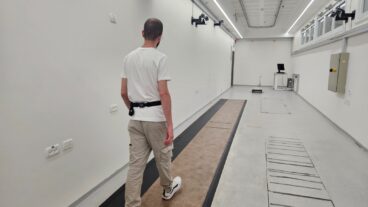Non-invasive, and easy to use, Cardiatec’s Endotect could save the lives of thousands of people with heart disease.Forget everything you think you know about avoiding heart attacks – or at least be prepared to significantly adjust your knowledge.
Cutting your cholesterol, dieting and exercising may help you avoid heart problems. Or they may not, if the cells that line the interior surface of your blood vessels, called the endothelium, are out of whack.
“In the United States, millions of people who are at risk for heart problems have been eating right and exercising for years – and yet we still see millions develop heart problems every year, with more than one million Americans dying from the disease annually,” Avner Amir, CEO of Israel’s Cardiatec tells ISRAEL21c.
“There is no doubt about it,” says Dr. Giora Amitzur, Cardiatec’s co-founder and CTO. “You can have two people of nearly the same weight, cholesterol level, lifestyle, etc. – the usual factors people think about as risk factors for heart problems. One eats properly and exercises and one doesn’t – and yet, if the one who does everything right has endothelium dysfunction (ED), while the one who doesn’t take care of himself has a healthy endothelium, the risk for a heart incident for the one with ED is significantly high, while the risk for the person with a healthy endothelium is virtually zero.”
Doctors have known for some years of the connection between ED, and cardiovascular problems. In the mid 1990s, researchers discovered that deterioration of the endothelium reduces the release of nitrous oxide in the blood. It was a discovery that won three US doctors a Nobel Prize in physiology in 1998.
Extensive studies conducted over the past 10 years leave no room for doubt – there is a direct correlation between the condition of the endothelium and the risk for heart attacks, stoke and sudden death and attendant conditions, like arteriosclerosis. The healthier your endothelium, the less likely you are to have a heart attack and stroke – regardless of other factors like BMI and cholesterol counts.
In order to determine the condition of the endothelium you have to be able to measure it, and that’s where Cardiatec comes in. The company has developed the Endotect device that can be used to detect whether you have ED, and it’s as easy to use as a blood pressure measuring device.
“Our device can give you the information you really need to avoid a heart attack and stroke – by telling you if you have a problem with your endothelium,” explains Amir.
ED is completely treatable, and once detected your doctor can design a treatment program that can save your endothelium – and probably your life, too.
Today, more than one million Americans are at risk for serious heart and stroke problems each year – and the cost to the economy for treating them and for days lost at work is now estimated at over $400 billion annually, double what it was in 2003.
“It’s clear that something is wrong,” says Amir. “Currently, the medical establishment is geared to reacting to heart disease and stroke, treating it after the fact. We must move to a model of prevention, but one that is far more accurate than the ones most recommended by doctors today, consisting of diet and exercise changes.” That model, Amir says, is ED detection.
Before now, there were only two real techniques to measure ED – neither of which were very practical according to Amitzur, one of Israel’s top cardiovascular experts, and the inventor of the Endotect.
In one method, an invasive operating procedure is necessary, and in the other, an expensive, complicated ultrasound-type device is used to measure the endothelium, requiring a large investment and intensive training for proper use (Israel, for all it’s advanced medical infrastructure, has only one medical center with the device).
The Endotect, on the other hand, is relatively inexpensive, and easy to use – so easy that any doctor will be able to run tests in their offices, in as little as 15 minutes. The Endotect determines the condition of the endothelium by non-invasively measuring the pulse at two main points on the arm (radial artery and brachial artery), comparing the pulse before and after pressure is applied to the arm.
Once the endothelium’s condition has been measured, doctors can prescribe a treatment program – which could consist of drugs or, if diagnosed early enough, diet and lifestyle changes, taking food and nutrition supplements, like Omega-3, flavonoids, and others).
Follow-up monitoring with the Endotect is essential. The key, says Amitzur, is that the patient and doctor are no longer flailing about in the dark. “Patients can get themselves tested on a regular basis, observing the progress as their endothelium is restored to health. This provides a major incentive to follow through on difficult lifestyle changes, such as quitting smoking and exercising,” he says.
The Endotect is close to FDA approval, and the company expects to begin sales in the middle of next year. “There is a lot of excitement about this product,” says Amir. “Besides heart conditions and stroke, the Endotect can be used to measure treatment progress in other areas, such as Type-II diabetes.”
Despite so much effort today in prevention, people still die from heart disease says Amir – but maybe that’s because they’ve been working to prevent something other than the disease they actually have.
With Endotect, he says, diagnosing cardiovascular problems could become as routine as diagnosing the common cold – and maybe even as easy to treat. “Once you take the guesswork out of diagnosis, you can save a lot of lives,” Amir says – and that’s just what Endotect does.












